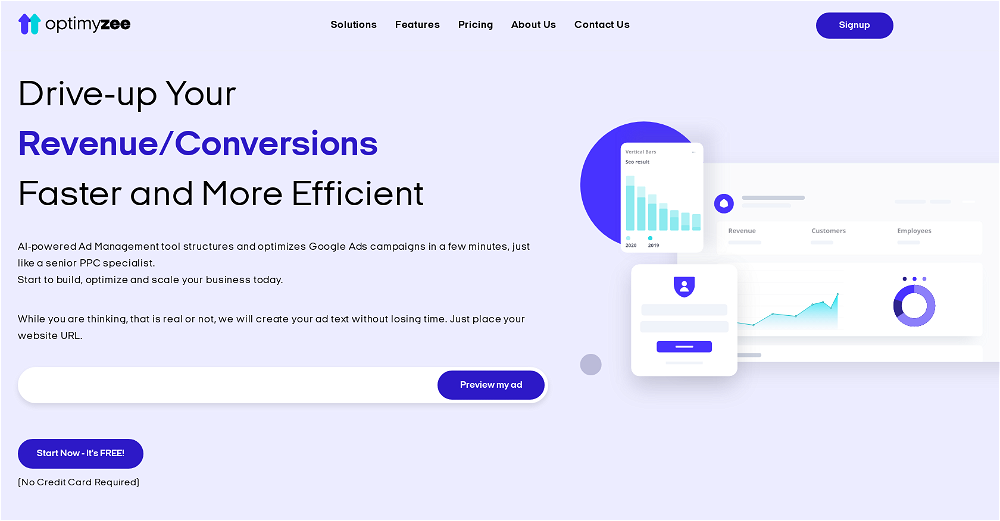What exactly is Signal?
Signal is a generative AI tool designed to enhance revenue operations (RevOps). It uses data to assist operations teams in driving more effective business outcomes. Signal achieves this by creating custom Machine Learning Models (LLMs) to tackle sophisticated challenges in the go-to-market process. It consolidates data from multiple tools in a unified workspace, allowing teams to connect, analyze, and sync their data.
How does Signal use AI in revenue operations?
Signal uses AI in revenue operations by creating custom LLMs (Machine Learning Models) to address complex challenges across all facets of the go-to-market process. Its AI-native tools are designed to generate queries, visuals, and analysis using plain language, enabling even non-technical users to analyze complex data without the need for coding.
What type of interface does Signal provide?
Signal provides an easy-to-use interface that enables teams to connect, analyze, and sync data from different tools and consolidate it into a unified workspace. The interface allows natural language inputs to generate SQL queries, visualizations, and analyses without the need for technical proficiency.
How does Signal utilize AI-native tools in data analysis?
AI-native tools in Signal simplify data analysis by generating queries, visuals, and analyses using plain language, thus keeping the process code-free. These tools eliminate the technical barriers traditionally associated with data analysis.
Can non-technical users use Signal?
Yes, Signal is designed with a non-technical user interface, allowing even those without coding knowledge or skills to conduct data analysis effectively. Its AI-native tools and natural language to SQL translation capabilities enable any user to make the most of their data.
What measures does Signal take to ensure data accessibility and security?
Signal places substantial emphasis on the accessibility and security of data. It swiftly connects to popular data warehouses, databases, and various revenue applications. Signal has incorporated modern data controls to ensure best data practices are followed and is also SOC 2 Type II compliant, signifying high standards of security and data privacy are adhered to.
How does Signal connect to data warehouses and databases?
Signal swiftly connects to data warehouses and databases with the help of efficient integration capabilities. It is able to quickly link to major data warehouses, databases, and various revenue applications, ensuring a smooth and secure connection process.
What are the data best practices that Signal enforces?
Signal enforces data best practices via its modern data controls. These ensure consistent and secure access to the data, along with measures to meet the compliance standards such as SOC 2 Type II compliance.
What does it mean that Signal is SOC 2 Type II compliant?
SOC 2 Type II compliance signifies that Signal adheres to high standards of security and data privacy. It means the AI has been audited and found to effectively safeguard customer data following the standards set by the Service Organization Control 2.
How does Signal's natural language to SQL translation feature work?
Signal's natural language to SQL translation feature works by allowing users to input requests in everyday language, which are then automatically translated into SQL queries. This empowers business teams to service their own data requirements, reducing dependency on technical teams.
How does Signal plan to democratize data?
Signal aims to democratize data by making data warehouses accessible to business users, reducing the barriers to data access and comprehension. It does this through the use of AI-native tools and natural language to SQL translation capabilities, enabling even non-technical users to understand and make sense of complex data sets without the need to write code.
How does Signal help in data integration and visualization?
Signal simplifies data integration and visualization by allowing teams to connect, analyze, and sync data from various tools in a unified workspace. It uses AI-native tools to generate visuals and analyses, making data more comprehensible and actionable.
What popular revenue applications can Signal connect to?
Signal swiftly connects to the most popular revenue applications, which can likely include those related to sales, marketing, and CRM, among others. However, specific examples of these revenue applications are not provided on their website.
Is there any requirement to write code while using Signal?
No, there is no requirement to write code while using Signal. Its AI-native tools are designed to generate queries, visuals, and analysis using plain language, eliminating the need for any technical or coding knowledge.
Why is Signal considered 'built for operations'?
Signal is regarded as 'built for operations' due to its design and features that cater specifically to operations teams. These include generating custom Machine Learning Models for complex challenges, its ability to quickly connect with popular warehouses, databases, and revenue applications, and the integration of modern data controls for best practices.
How does Signal help in reducing time spent on servicing data requests?
Signal reduces the time spent on servicing data requests by enabling natural language to SQL translation. This feature empowers business teams to answer their own questions, thereby decreasing the dependency on technical teams for data requests and contributing to their productivity.
Where can we book a demo for Signal?
You can book a demo for Signal by visiting the following URL: https://forms.default.com/592195

 Really handy tool — just double-click and it drops in things like videos, FAQs, or product blocks. Makes blog posts way more engaging without any extra hassle.
Really handy tool — just double-click and it drops in things like videos, FAQs, or product blocks. Makes blog posts way more engaging without any extra hassle. It analyzes my search campaign data exceptionally well. I wouldn’t be able to find so many optimization opportunities manually. With this tool, I save 50% of my time on data analysis.
It analyzes my search campaign data exceptionally well. I wouldn’t be able to find so many optimization opportunities manually. With this tool, I save 50% of my time on data analysis.





How would you rate Signal GTM?
Help other people by letting them know if this AI was useful.